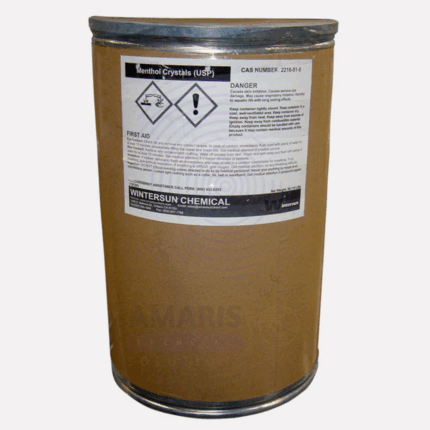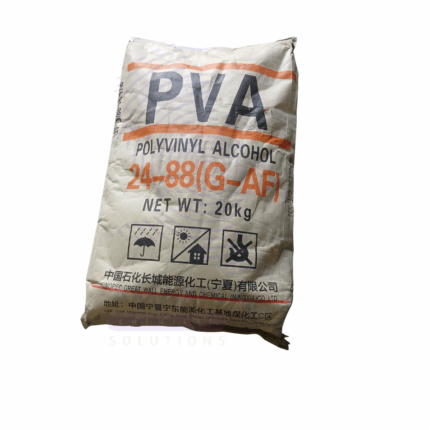

Turkey Red Oil (Sulphated Castor Oil)
Turkey Red Oil, also known as Sulphated Castor Oil, is a water-soluble derivative of castor oil produced through a sulfonation process using concentrated sulfuric acid. It results in a highly viscous, amber-colored liquid that acts as an excellent emulsifier, wetting agent, and dispersing agent. Unlike natural castor oil, it disperses easily in water, making it ideal for applications in textiles, cosmetics, agriculture, and industrial formulations. Its biodegradable and non-toxic nature also makes it eco-friendly and suitable for sensitive formulations.
Primary Uses
Textile Industry:
Used as a wetting agent in dyeing and finishing processes to improve penetration of dyes and chemicals into fibers.
Functions as an emulsifier in textile softeners and finishes.
Assists in leveling dye uptake and improving the uniformity of coloration.
Cosmetics & Personal Care Industry:
Used in bath oils, hair conditioners, and skin creams for its emulsifying, moisturizing, and conditioning properties.
Serves as a non-irritating surfactant and natural alternative in organic personal care products.
Agriculture Industry:
Functions as a spreader, sticker, and emulsifier in pesticide and herbicide formulations to ensure even application and improved efficacy.
Used in foliar spray formulations for better absorption of nutrients and chemicals.
Leather Industry:
Acts as a fatliquor or softening agent in leather processing to enhance flexibility and water resistance.
Used during tanning to impart a smooth, pliable texture to finished leather.
Lubricants & Metalworking Fluids:
Used in metal cutting and machining operations as a lubricant and coolant emulsifier.
Added to rust-preventive oils for stability and emulsifying power.
Secondary Uses
Paints and Coatings:
Used as an emulsifier or dispersing agent in water-based paints and coatings.
Helps stabilize pigment dispersion and enhances surface wetting.
Soaps and Detergents:
Incorporated as a wetting and dispersing agent in liquid soaps, detergents, and cleansers.
Adds mild conditioning properties to surfactant blends.
Paper Industry:
Employed as a fiber lubricant and softener in specialty paper production.
Rubber & Plastic Processing:
Used as an emulsifier in processing oils for rubber compounding.
Functions as an anti-static and dispersing agent in plasticizers.
Environmental Applications:
Biodegradable oil used in bioremediation formulations and eco-friendly degreasers.
Chemical Name (IUPAC): Sulphated hydroxy fatty acid glyceride (from Ricinus communis oil)
Common/Trade Name: Turkey Red Oil, Sulphated Castor Oil
CAS Number: 8002-33-3
HS Code: 3402.90.90
Synonyms: Sulfonated castor oil, Sulfated castor oil, TRO
Physical & Chemical Properties
Physical State: Viscous liquid
Color & Odor: Amber to reddish-brown; mild oily odor
Solubility: Completely soluble in water
pH (1% solution): ~6.0–8.0 (depends on grade)
Viscosity: High
Acid Value: Typically <10
Sulphated Oil Content: 70–80% depending on grade
Safety & Hazard Attributes
GHS Classification: Not classified as hazardous under typical conditions
Toxicity: Non-toxic and skin-friendly; may cause mild irritation in concentrated form
Exposure Limits: No established limits; general good hygiene practices apply
Storage & Handling Attributes
Storage Conditions: Store in a cool, dry, well-ventilated area, away from direct sunlight and moisture
Container Type: HDPE drums, IBC tanks, or bulk containers
Shelf Life: 12–24 months under proper storage
Handling Precautions: Avoid contamination with acids or oxidizers; prevent freezing
Regulatory & Compliance Attributes
Meets technical and cosmetic-grade requirements depending on the intended application
Compliant with REACH, TSCA, and other international chemical inventories
Can be formulated in natural and organic-certified cosmetic products
Manufactured under Good Manufacturing Practices (GMP)
Environmental & Health Impact
Biodegradability: Biodegradable under aerobic conditions
Ecotoxicity: Low toxicity to aquatic organisms
Bioaccumulation: Not expected to bioaccumulate
PPE Required: Gloves and eye protection for bulk handling
Handling Guidelines: Use with adequate ventilation; clean spills with absorbent material
Storage Measures: Keep sealed and protected from contamination
First Aid Measures
Inhalation: Not hazardous in normal use; move to fresh air if irritation occurs
Skin Contact: Wash with soap and water if irritation develops
Eye Contact: Rinse cautiously with water; seek medical attention if irritation persists
Ingestion: Non-toxic in small quantities; seek medical advice for large ingestion
Firefighting Measures
Fire Hazards: Combustible at high temperatures
Extinguishing Media: Water spray, foam, dry chemical, or CO₂
Hazardous Combustion Products: Carbon oxides and sulfur oxides


 Preservatives(food)
Preservatives(food) Flavor Enhancers
Flavor Enhancers Acidulants
Acidulants Sweeteners
Sweeteners Antioxidants
Antioxidants Colorants(food)
Colorants(food) Nutraceutical Ingredients (food)
Nutraceutical Ingredients (food) Nutrient Supplements
Nutrient Supplements Emulsifiers
Emulsifiers
 Collectors
Collectors Dust Suppressants
Dust Suppressants Explosives and Blasting Agents
Explosives and Blasting Agents Flocculants and Coagulants
Flocculants and Coagulants Frothers
Frothers Leaching Agents
Leaching Agents pH Modifiers
pH Modifiers Precious Metal Extraction Agents
Precious Metal Extraction Agents
 Antioxidants(plastic)
Antioxidants(plastic) Colorants (Pigments, Dyes)
Colorants (Pigments, Dyes) Fillers and Reinforcements
Fillers and Reinforcements Flame Retardants
Flame Retardants Monomers
Monomers Plasticizers
Plasticizers Polymerization Initiators
Polymerization Initiators Stabilizers (UV, Heat)
Stabilizers (UV, Heat)
 Antifoaming Agents
Antifoaming Agents Chelating Agents
Chelating Agents Coagulants and Flocculants
Coagulants and Flocculants Corrosion Inhibitors
Corrosion Inhibitors Disinfectants and Biocides
Disinfectants and Biocides Oxidizing Agents
Oxidizing Agents pH Adjusters
pH Adjusters Scale Inhibitors( water)
Scale Inhibitors( water)
 Antioxidants(cosmetic)
Antioxidants(cosmetic) Emollients
Emollients Fragrances and Essential Oils
Fragrances and Essential Oils Humectants
Humectants Preservatives
Preservatives Surfactants(cosmetic)
Surfactants(cosmetic) Thickeners
Thickeners UV Filters
UV Filters
 Fertilizers
Fertilizers Soil Conditioners
Soil Conditioners Plant Growth Regulators
Plant Growth Regulators Animal Feed Additives
Animal Feed Additives Biostimulants
Biostimulants Pesticides (Herbicides, Insecticides, Fungicides)
Pesticides (Herbicides, Insecticides, Fungicides)
 Active Pharmaceutical Ingredients (APIs)
Active Pharmaceutical Ingredients (APIs) Excipients
Excipients Solvents(pharmaceutical)
Solvents(pharmaceutical) Antibiotics
Antibiotics Antiseptics and Disinfectants
Antiseptics and Disinfectants Vaccine Adjuvants
Vaccine Adjuvants Nutraceutical Ingredients (pharmaceutical)
Nutraceutical Ingredients (pharmaceutical) Analgesics & Antipyretics
Analgesics & Antipyretics
 Analytical Reagents
Analytical Reagents Solvents(lab)
Solvents(lab) Chromatography Chemicals
Chromatography Chemicals Spectroscopy Reagents
Spectroscopy Reagents microbiology-and-cell-culture-reagents
microbiology-and-cell-culture-reagents Molecular Biology Reagents
Molecular Biology Reagents Biochemical Reagents
Biochemical Reagents Inorganic and Organic Standards
Inorganic and Organic Standards Laboratory Safety Chemicals
Laboratory Safety Chemicals Specialty Laboratory Chemicals(Special Laboratory Equipment)
Specialty Laboratory Chemicals(Special Laboratory Equipment)
 Demulsifiers
Demulsifiers Hydraulic Fracturing Fluids
Hydraulic Fracturing Fluids Scale Inhibitors(oil)
Scale Inhibitors(oil) Surfactants(oil)
Surfactants(oil) Drilling Fluids
Drilling Fluids
 Dyes and Pigments
Dyes and Pigments Bleaching Agents
Bleaching Agents Softening Agents
Softening Agents Finishing Agents
Finishing Agents Antistatic Agents
Antistatic Agents
 Admixtures
Admixtures Waterproofing Agents
Waterproofing Agents Sealants and Adhesives
Sealants and Adhesives Curing Compounds
Curing Compounds Concrete Repair Chemicals
Concrete Repair Chemicals Anti-Corrosion Coatings
Anti-Corrosion Coatings
 Surfactants(cleaning)
Surfactants(cleaning) Builders
Builders Enzymes
Enzymes Solvents (Cleaning)
Solvents (Cleaning) Fragrances
Fragrances
 Electronic Chemicals
Electronic Chemicals Catalysts
Catalysts Lubricants
Lubricants Photographic Chemicals
Photographic Chemicals Refrigerants
Refrigerants Automotive chemicals
Automotive chemicals Pyrotechnic Chemicals
Pyrotechnic Chemicals
 Biodegradable Surfactants
Biodegradable Surfactants Bio-based Solvents
Bio-based Solvents Renewable Polymers
Renewable Polymers Carbon Capture Chemicals
Carbon Capture Chemicals Wastewater Treatment Chemicals
Wastewater Treatment Chemicals
 Pigments
Pigments Solvents(paint)
Solvents(paint) Specialty Coatings
Specialty Coatings Binders/Resins
Binders/Resins Additives
Additives Driers
Driers Anti-Corrosion Agents
Anti-Corrosion Agents Functional Coatings
Functional Coatings Application-Specific Coatings
Application-Specific Coatings
 Fresh Herbs
Fresh Herbs Ground Spices
Ground Spices Whole Spices
Whole Spices Spice Blends
Spice Blends Dried Herbs
Dried Herbs
 Leavening Agents
Leavening Agents Dough Conditioners
Dough Conditioners Flour Treatments
Flour Treatments Fat Replacers
Fat Replacers Decoratives
Decoratives Preservatives(baking)
Preservatives(baking)
 Plasticizers & Softeners
Plasticizers & Softeners Reinforcing Agents
Reinforcing Agents Adhesion Promoters
Adhesion Promoters Vulcanizing Agents
Vulcanizing Agents Antidegradants
Antidegradants Blowing Agents
Blowing Agents Fillers & Extenders
Fillers & Extenders Accelerators & Retarders
Accelerators & Retarders






















